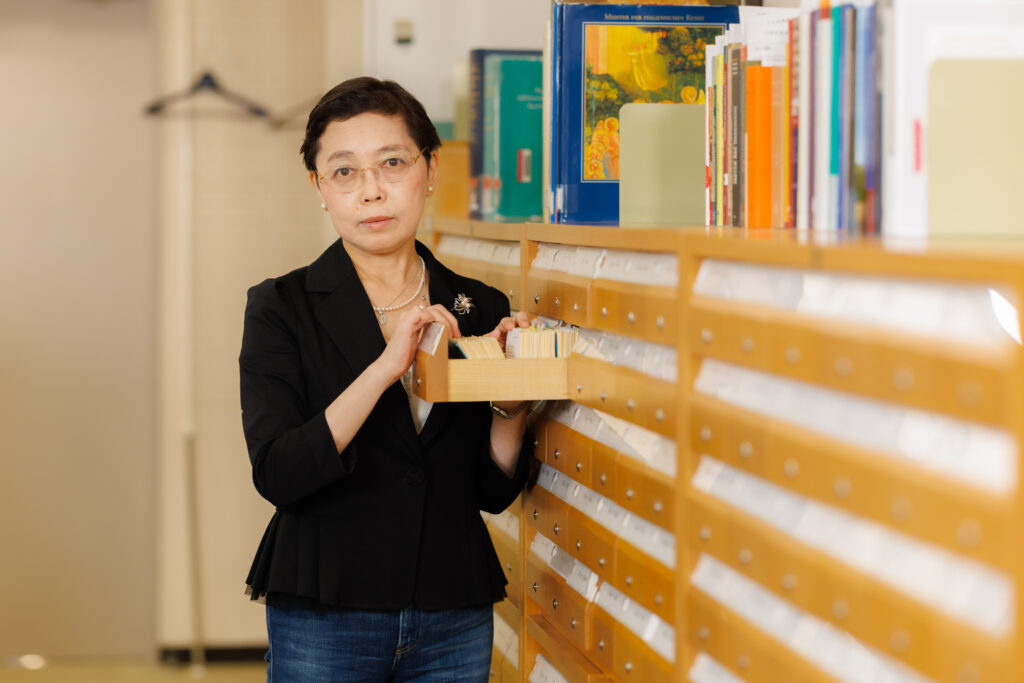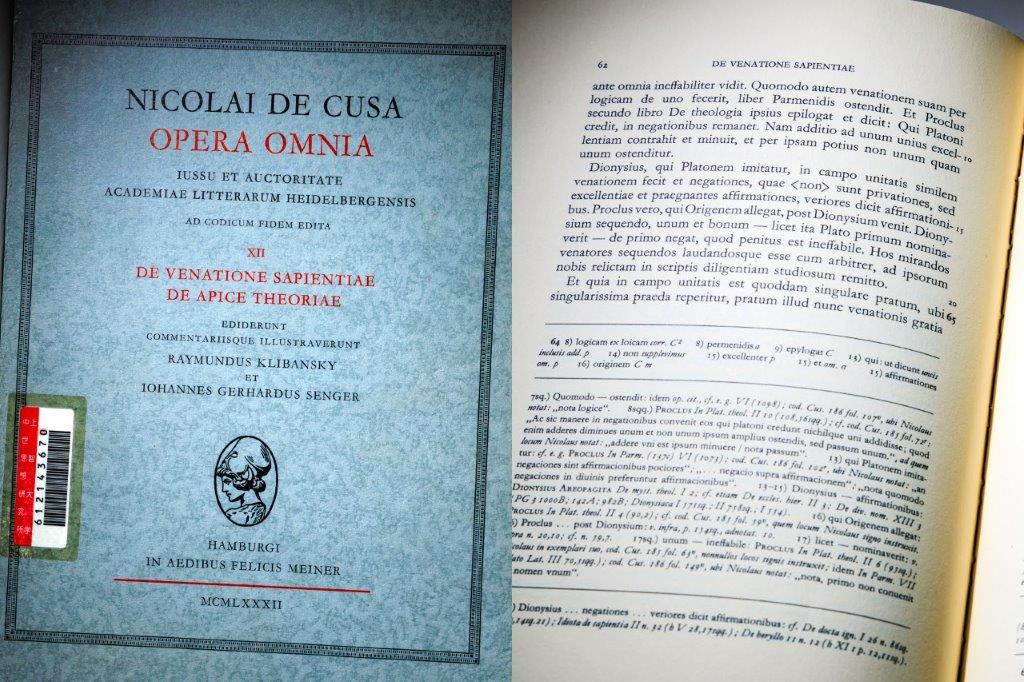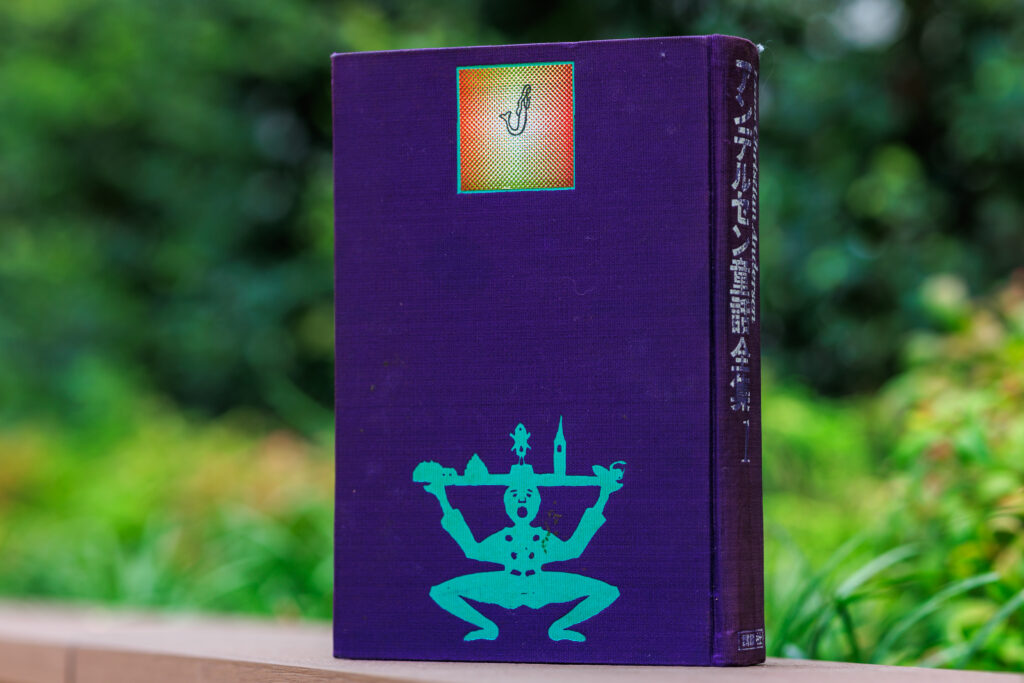
Professor Naoko Sato from the Faculty of Humanities specializes in Western medieval thought. She undertakes research on mysticism, carefully studying the writings by Nicolaus Cusanus, a church politician, philosopher, and theologian who lived during the Renaissance.
At some point, everyone thinks about their own roots and that of the world. Regardless of East or West, vast amounts of mystical thoughts remain as texts in the legacy of philosophy. My research can be broadly described as thinking about the origins of existence and self-consciousness, using these texts as clues.
I focus on Nicolaus Cusanus, a thinker from the first half of the 15th century. He led the Catholic world as a cardinal during the historic turning point of the fall of Constantinople. Aside from his diligent efforts as a church politician, he amassed a variety of texts - from classical antiquity, early Christian era, medieval Latin-, and he himself also authored mystical texts.
The coincidence of opposites is the key concept of his mystical thinking. Usually, understanding comes from discerning and distinguishing differences, such as “A, B, C, D” and “self vis-à-vis others”. Cusanus advocated that things that are different from each other coincide in the unity of God.
In addition, he emphasized that the diversity of things that are different from each other is a manifestation of the abundance of God’s unity. And precisely from this point, he developed his own theory of religious tolerance. I feel that his thinking also offers hints to us in the modern age.
Paying attention also to the notes in the margins

Cusanus formed his own thinking while accepting past and contemporary thoughts. It is being verified by the rigorous “textual criticism” that was conducted in Europe – in his case, especially in Germany. Before the appearance of the printing press, texts were handwritten manuscripts. Differences between texts arose as they were copied by people’s hands. Textual criticism is the enormous task of confirming what the author originally wrote.
Fortunately, in the case of Cusanus, critical editions which have gone through textual criticism have already been published. The annotations of the critical edition present not only the differences between manuscripts, but also the texts of past authors that Cusanus has definitely referred to.“Definitely” is determined based on overlaps with motifs of other authors, the texts of past authors that he collected, and the notes and marks he wrote in the margins of these texts.
A part of his collection, together with notes he wrote in the margins, has also been printed. Therefore, it is not so difficult to investigate how he accepted European mystics’ tradition. Conversely, through Cusanus, we are also able to broadly survey the development of Western thought.
Book collection and translation project
I also serve as the director of Sophia University’s Institute of Medieval Thought, which was founded in 1976. Since its establishment, this institute has collected primary sources, including critical editions, as well as important secondary sources, and provides them to researchers in Japan. In addition, with the cooperation of researchers from other universities, the institute also publishes Japanese translations of important sources. The way this institute operates is reminiscent of the intellectual activities conducted in the monasteries and cathedral schools of the Middle Ages.
There is a limit to my own abilities. While I recognize my own limitations, it would be a great honor for me if the activities of this institute can contribute to the dissemination of Western medieval thought in Japan.
The book I recommend
“Andersen Dowa Zenshu (Andersen’s Complete Fairy Tales)” (total of eight volumes)
by Hans Christian Andersen, Japanese translation by Genkuro Yazaki, Kodansha

The photo shows the first volume of the complete works of Andersen (8 vols.). This book was a gift from my parents on my third birthday. Since then, I have revisited all the volumes numerous times. It is my hope that readers, through reading the full text, will engage with Andersen’s profound contemplations rooted in Christianity, which are often omitted in picture books.
-
Naoko Sato
- Professor
Department of Philosophy
Faculty of Humanities
- Professor
-
Graduated from the Department of Philosophy, Faculty of Humanities, Sophia University, and received her master’s degree in Philosophy after completing the university’s Master’s Program of Philosophy, and withdrew with full credits after completing the university’s Doctoral Program of Philosophy. Took on the positions of lecturer, assistant professor, and associate professor at the Department of Philosophy, Faculty of Humanities, Sophia University before assuming her current position in 2010. Serves as the director of the university’s Institute of Medieval Thought since 2008.
- Department of Philosophy
Interviewed: September 2023